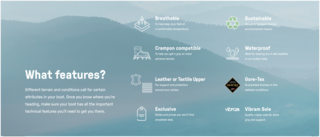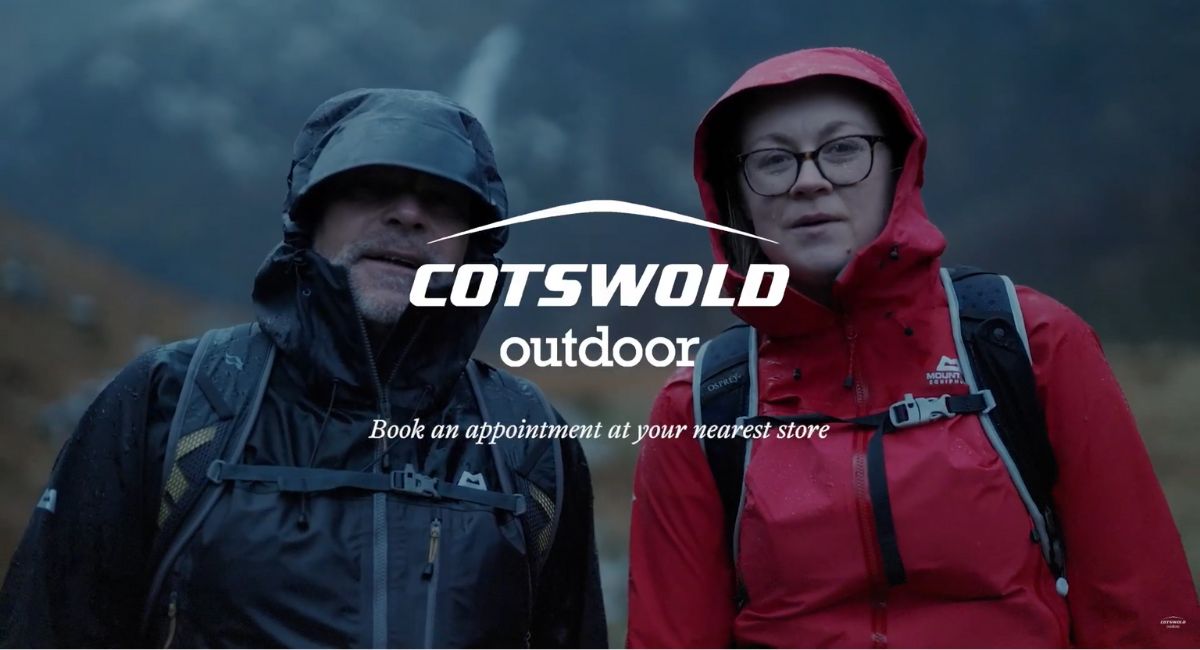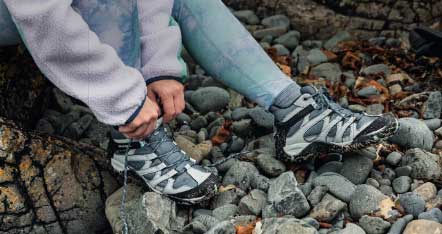Top Tips For Choosing The Best Walking Boots
Our Guide to Finding the Perfect Hiking Boots
With so many types of walking boots and hiking shoes to choose from and various features available, it's important to know what's what before choosing your ideal walking or hiking boots. Selecting the right boots for you and your adventures will ensure you stay supported and comfortable for the many years in the outdoors you and your shoes and boots have yet to come. Read ahead as we share our top tips for choosing the perfect boots for your outdoor adventures.
Where Are You Going?
Walking boots are designed and made with specific environments in mind. Characteristics such as sole stiffness and ankle height can greatly vary depending on the terrain and conditions you will be heading into.
If, for example, you intend to stick to well-trodden and predictable paths, you can go for a lightweight boot or walking shoe with a reasonable amount of flexibility. In less challenging terrain, flexibility is good as it helps your foot move naturally and can aid your comfort on longer journeys.
If you intend to be moving over uneven or very steep ground, then you'll need a more rigid boot with good ankle support. Stiffer soles provide a more stable platform, and a higher mid-cut will support and protect your ankle.
Of course, walking encompasses different landscapes, and many people will be somewhere in the middle of this scale. As a rule, we find it best to err on the side of caution to ensure you're not caught out while out in the hills.
Do You Need Waterproof Boots?
Most boots are lined with a waterproof membrane, which is useful for weatherproofing your shoes and allowing you to cross streams and water without issue. But, to avoid soggy feet, you don’t just want to keep the wet out; you need to let it out too, otherwise your boots will be full of sweat and condensation. In other words, you need your walking boots to breathe. GORE-TEX® walking boots are particularly good at allowing sweat vapour to escape, but many different and effective waterproof membranes are available to suit everyone.
Another way to keep out the wet is using a gaiter: a waterproof cuff that goes over the top of your boot and fastens around the lower leg. This helps prevent water from running down into your boot from the top as you walk through rain, snow, or wet grass. Gaiters are also particularly useful when walking over scree or loose gravel, to keep the terrain from flicking into your footwear.
Should I Buy Leather or Synthetic Boots?
Thanks to advances in materials, the differences between leather and synthetic boots have become increasingly small. In the past, leather boots were more durable and easier to care for, whereas synthetic boots were lighter and required less ‘breaking in’. Today, differences between the two materials are less pronounced, meaning the most important decision you need to make for your boots is the fit, as getting the best fit is the best place to start.
Do Your Boots Fit?
Getting the right fit is essential when choosing your walking boots. Boot fitting isn't just about the size of your feet - the shape is also key. From the width of your heel to the flexibility of your toes. To check the fit of a pair of boots or shoes you have at home, follow our Expert Boot Fitting Guide.
With so many variables to consider, we recommend coming in-store for a Free Expert Boot Fitting Service. This involves being accurately measured and talking through your needs to find the perfect boots for your outdoor adventures. Discover more about our boot fitting service, here:
What Socks Should I Buy?
While you’re getting fitted, make sure you check out socks, too. The right socks, with the right padding, insulation, wicking and elasticity, can make a big difference to the feel of your boots. Check out our guide to Choosing The Right Socks for more information.
The Anatomy Of A Boot
1. The Sole Unit

1. The rubber outsole provides grip. Deep lugs dig into the ground, and high-friction rubber compounds help to stop you slipping on smooth rocks.
2. The midsole is buried inside the boot to provide the correct amount of flex. Moulded from various composites, this stiffener needs to be rigid if you intend to stand on small, rocky edges or scramble, but can be more flexible if it’s just for walking. When picking your boots, bend them with your hands to check their flexibility.
3. A footbed or insole provides cushioning, so you’re not standing straight directly on the harder midsole. The insole is usually removable, and many people with arch issues may choose instead to replace it with a specialised footbed for comfort.
2. Inside The Boot

4. A soft leather or wicking fabric lining provides comfort inside the boot, protecting the membrane from dirt and abrasion.
5. The tongue will usually be attached to the rest of the upper with bellows to stop unwelcome water and debris from getting in. When fitting your boot, ensure the tongue is correctly aligned with no pressure points or folds.
6. The cuff or collar wraps around your ankle. The cuff should be soft on the inside, but its overall rigidity depends on the style of the boot. Technical boots should have a high, firm cuff, whereas more leisurely styles can be more flexible all-round.
3. The Outer

7. The toe box and heel counter, like the midsole, are buried away. Sitting between the lining and the outer, they provide the shape and structure at the front and back of the boot. The size and shape of these can vary between brands and styles, so make sure to try on a few options to ensure you get the perfect fit.
8. The rand is a rubber reinforcement around the edge of the boot to guard against abrasion and protect the stitching between the sole and upper. Not all boots and shoes have this, as it is a characteristic mainly reserved for stiffer, more technical footwear.
9. On a walking boot you’ll find robust hooks, eyelets, and locking cleats for the laces - ensuring a secure, customisable fit.
Related articles

Let us know you agree to cookies
We use marketing, analytical and functional cookies as well as similar technologies to give you the best experience. Third parties, including social media platforms, often place tracking cookies on our site to show you personalised adverts outside of our website.
We store your cookie preferences for two years and you can edit your preferences via ‘manage cookies’ or through the cookie policy at the bottom of every page. For more information, please see our cookie policy.












